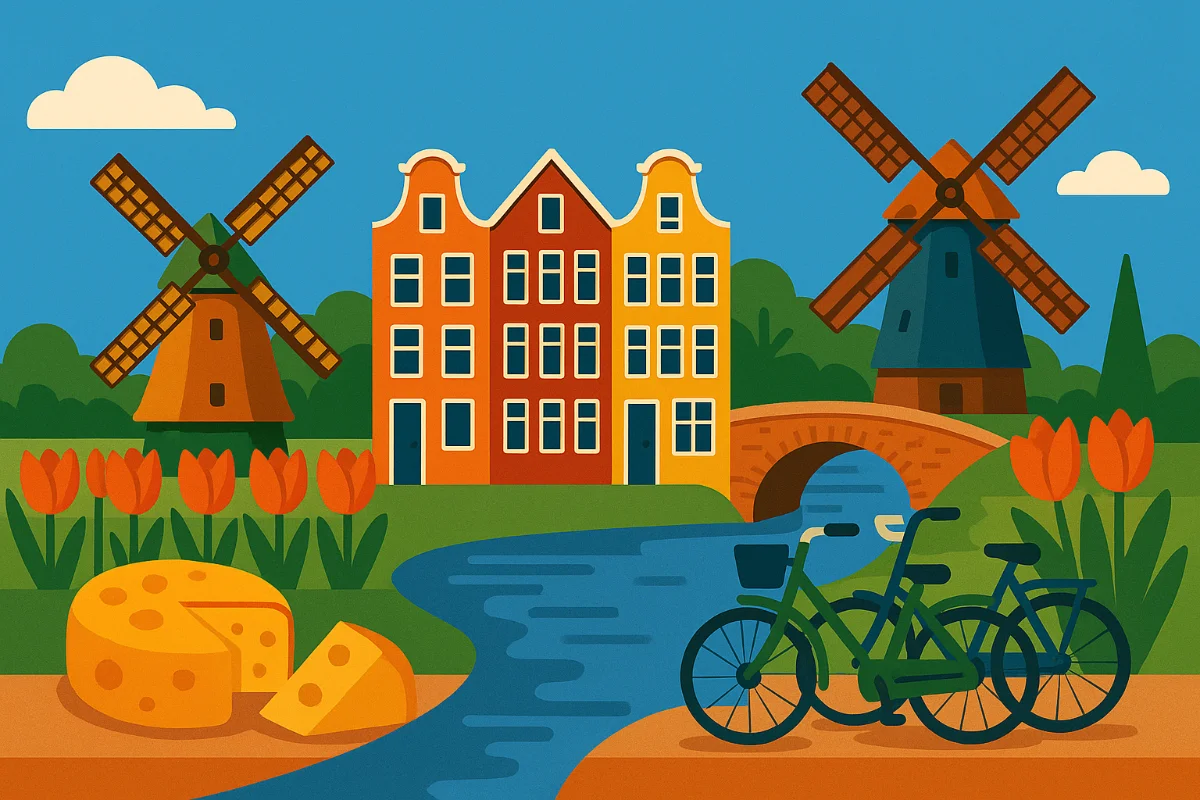Introduction: The te + Infinitive Construction
In Dutch, similar to the "to + verb" infinitive form in English, you often use te + the infinitive form of a verb. This construction appears in various grammatical structures, notably after certain verbs, in combination with om, and after some adjectives.
1. om + te + infinitive: Expressing Purpose, Reason, Intention
This is a very common and important structure used to explain why someone does something (purpose or intention).
Structure: Main Clause + om + (optional extra info) + te + Infinitive (+ Rest)
Ik ga naar de supermarkt om boodschappen te doen.(I am going to the supermarket to do groceries.) - PurposeHij studeert hard om goede cijfers te halen.(He studies hard to get good grades.) - PurposeZe gebruiken een kaart om de weg niet kwijt te raken.(They use a map in order not to get lost.) - Negative purposeHet is belangrijk om gezond te eten.(It is important to eat healthily.) - Here,om...tespecifies what is important.Ik heb geen tijd om je te helpen.(I don't have time to help you.) - Explains the lack of time.
Key Points:
omintroduces the purpose/reason.tecomes directly before the infinitive verb.- If there are objects or adverbs related to the infinitive, they usually come between
omandte + infinitive. - If the infinitive is a separable verb, the prefix and verb stay together after
te:om op te staan(to get up),om mee te nemen(to take along).
2. te + infinitive After Certain Verbs
Many verbs are directly followed by te + infinitive without om. These often express beginning, continuing, stopping, trying, promising, forgetting, deciding, seeming, etc.
Structure: Subject + Conjugated Verb + (Object/Rest) + te + Infinitive
Common Verbs + te + Infinitive:
beginnen te(to begin to):Het begint te regenen.(It's beginning to rain.)stoppen met ... te(to stop ... to/doing):Hij stopt met roken.(He stops smoking.) Note:stoppen metoften takes a noun/gerund orte+infif the verb is clear.Hij stopt om te rokenmeans He stops in order to smoke!proberen te(to try to):Ik probeer Nederlands te leren.(I am trying to learn Dutch.)vergeten te(to forget to):Ik ben vergeten de deur op slot te doen.(I forgot to lock the door.)beloven te(to promise to):Hij belooft mij te helpen.(He promises to help me.)besluiten te(to decide to):We besluiten naar huis te gaan.(We decide to go home.)lijken te/schijnen te(to seem to):Hij lijkt moe te zijn.(He seems to be tired.)Het schijnt een aardige man te zijn.(He seems to be a nice man.)hoeven te(to need to - used in negative/questions):Je hoeft dat niet te doen.(You don't need to do that.)Hoeven we niet te wachten?(Don't we need to wait?)durven te(to dare to):Hij durft het niet te vragen.(He doesn't dare to ask.)- (Weten te) (to manage to/succeed in):
Hij wist te ontsnappen.(He managed to escape.)
Placement: te comes directly before the infinitive. Objects/adverbs related to the infinitive often come just before te or after the infinitive.
3. te + infinitive After Certain Adjectives + zijn
Some adjectives, when used with zijn, are often followed by te + infinitive to specify what the adjective refers to.
Structure: Subject + zijn (conjugated) + Adjective + te + Infinitive
Het is moeilijk te zeggen.(It is difficult to say.)Deze tekst is makkelijk te begrijpen.(This text is easy to understand.)Ik ben blij je te zien.(I am happy to see you.)Het is interessant om dat te weten.(It's interesting to know that.) - Often combined withomhere.Ben je bereid te helpen?(Are you prepared/willing to help?)
4. Verbs WITHOUT te (Modal Verbs, gaan, komen, laten, zien, horen, voelen)
It's crucial to remember that some verbs are followed by a bare infinitive (without te). These include:
- Modal verbs:
kunnen,willen,moeten,mogen,zullen Ik kan zwemmen.(NOTIk kan te zwemmen.)gaan,komen(often implying movement + action)Wij gaan wandelen.(NOTWij gaan te wandelen.)Hij komt eten.(He is coming to eat.) (NOTHij komt te eten.)laten(to let, to have something done)Ik laat hem gaan.(I let him go.)Ik laat mijn haar knippen.(I have my hair cut.)- Verbs of perception:
zien,horen,voelen Ik zie hem lopen.(I see him walking.)Ik hoor de baby huilen.(I hear the baby crying.)
The te + infinitive construction is widespread in Dutch. Key uses include:
om + te + infinitivefor purpose/reason.te + infinitiveafter specific verbs (likebeginnen,proberen,vergeten,beloven,lijken,hoeven).te + infinitiveafter certain adjectives +zijn.
Contrast this with verbs that take a bare infinitive (modals, gaan, komen, laten, perception verbs). Recognizing which verbs require te is essential for correct sentence formation.

